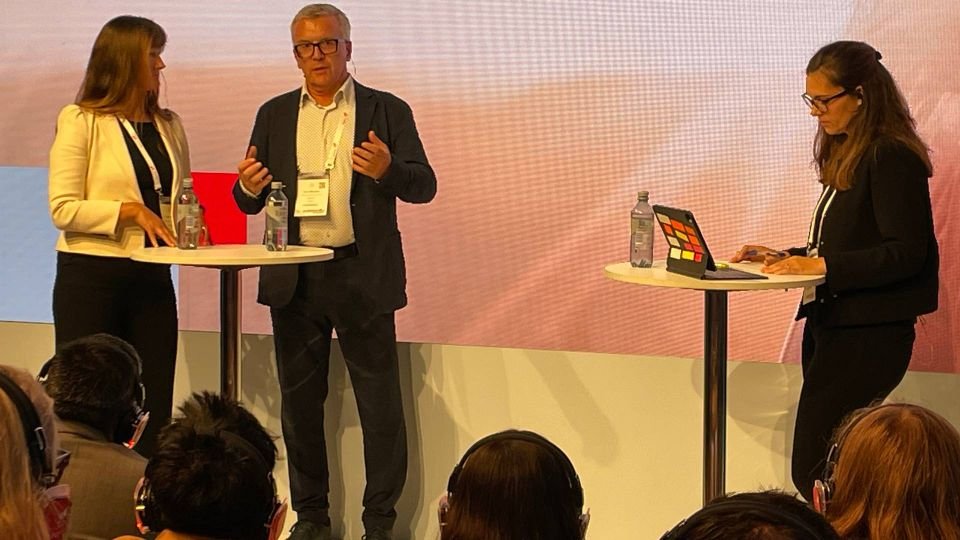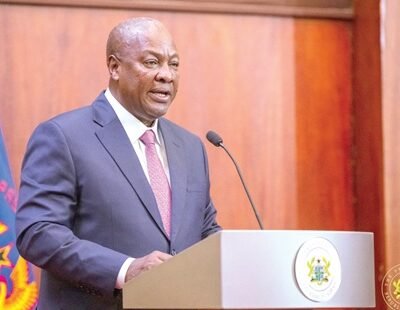During the ONS conference, Equinor organized a panel discussion on the possibility of the world reaching the 1.5 degree threshold. The company’s chief economist made it clear that it is by no means realistic.
“No way, it’s impossible to stay below the limit. It’s fundamentally impossible unless we collapse the world economy,” Eirik Wærness, Chief Economist at Equinor, says from the stage.
At the same time, he concludes the panel discussion by declaring himself an optimist about the world’s ability to tackle climate change through the energy transition.
“There are many good solutions on the way, so it must be allowed for an economist to be optimistic,” says Wærness.
Wærness believes in 2.2 degrees
When EnergiWatch Norway spoke to the chief economist afterwards, we asked him to elaborate on the apparent contrast between his bombastic denial that it is possible to reach the 1.5 degree target and his glowing optimism that things are moving in the right direction.
“What we see is that a lot is happening in the energy transition and we are becoming more and more energy efficient. To think that the world is now most likely heading towards a 2.2-degree scenario is much more optimistic than we thought a few years ago,” Wærness tells EnergiWatch Norway.
He emphasizes that Equinor’ aims to comply with the ambitions of the Paris Agreement, but that he and the company believe that the so-called Walls scenario in the company’s Energy Perspectives report is the most realistic. The second scenario is Bridges. In this scenario, the 1.5 degree target is reached. Wærness confirms that it is the Walls scenario and 2.2 degrees that Equinor now believes in and that it can be achieved, even though there is currently a lot of unrest in the world and great uncertainty in connection with, among other things, the upcoming US presidential election.
“Yes, the scenario we have, which goes up to 2050, if you extend it, is consistent with around 2.2 degrees. It’s in a situation where we also see protectionism, we see conflicts, but a lot is happening on the technology side and the inflation reduction act has had a very positive impact. So in that respect, we are moving in the right direction here,” says Wærness.
At the same time, he reiterates that the 1.5 degree target is unrealistic.
“The belief that you can deliver twice the world economy in 2050 without using more primary energy than today is an optimistic outcome,” says Wærness.
On stage, he said that going above 1.5 degrees and then coming back down was not realistic either. Carbon capture and storage (CCS) can play an important role here, but the volumes are simply too big.
“No, some people think so. Because we can’t stay below that, we go into overshoot. If you want to get back down to 1.5, you have to capture and store a lot of carbon,” says Wærness.
Wærness believes that this would involve too many billions of tons of CO2 to be captured, with uncertain effects on temperature and climate, and that it would be difficult to achieve in practice.
Economic realities
He backs his arguments with economic analysis.
You are an economist and economists are supposed to trust the numbers, but I’ve also noticed that there are several economists who say more of the same as you. Is it easier for economists to say no, “no way”, than it is for other professions?
“Yes, it is. What we look at is how the shift in demand continues, how the composition of that demand is met by supply, how slow it seems to be going, for example, to get a surplus of renewable electricity that can be used to make hydrogen, how hard it is to actually imagine that we can use hydrogen in a lot of applications, etc. That’s the advantage we economists have,” says Wærness.
Even if something is difficult and time-consuming, a lot of important climate contributions are relatively simple. Wærness highlights coal, which he believes it should be possible to do something significant about relatively quickly.
“Technologically, it’s very easy to get coal out of the electricity mix, but it’s not so easy to get it out of cement and steel,” says Wærness.
The challenge is that replacing coal, the most polluting energy source, with a renewable alternative is not quite as fast. Wærness singles out gas as a viable alternative.
“It mainly depends on large countries that currently use their own coal. They need to be offered competitive terms for the alternative, which is gas, and which they often have to import. So it can be difficult from an economic point of view, but technologically it’s very simple,” says Wærness.
Renewable energy struggles with market design
During the panel discussion, Wærness emphasized that there are market challenges in the renewable energy industry. He pointed out that large variations and frequent negative electricity prices create problems that need to be solved through the energy transition.
Is this the biggest bottleneck for renewable energy now?
“Globally, the biggest bottleneck for the renewable economy is the access to projects that would send investments flowing towards emerging economies where electricity consumption will increase. In the West, electricity consumption may have to increase slightly, but it’s mainly just the current production that needs to be replaced with something that is carbon free,” says Wærness.
At the same time, the sometimes dysfunctional electricity market is a problem that needs to be solved.
“What we’ve seen in the West is that when we do this quickly, we struggle with a market organization that means we end up with lower prices when the wind blows and the sun shines. Then we lack the technology or the size of the batteries, and they lack the framework conditions around them to be paid enough to keep the capacity on standby,” says Wærness.
“It can be solved, but until it’s solved, it’s a bad investment signal for those who want to build the next wind farm in such a country, under such a regime,” says Wærness.
Batteries are coming in full force in Europe, and Norway has flexible, controllable hydropower. But it’s still not enough. Norwegian hydropower doesn’t have the capacity to balance the whole of Europe, and batteries are best suited to short-term variations over a few hours. Therefore, it may be necessary to resort to non-renewable balancing power.
Gas power as balancing power requires better market design
Gas-fired power is relatively cheap to develop, but the fuel must be purchased and either carbon credits must be paid for the emissions or expensive CCS must be installed. This means that both investment costs and operating costs increase quite a lot, and these costs must be recovered through sufficiently high electricity prices when there are gas-fired power plants with or without CCS to ensure sufficient production when there is little sun and wind.
“Politically, it’s hard to imagine that you would accept very high electricity prices during hours when you are very dependent on gas-fired power. So you have to have a market design where you get support to build balancing power with gas,” says Wærness.
The challenge here is that such gas-fired power plants are only needed for a varying number of hours per year. Therefore, there are far fewer hours when investments can be recouped, the way the electricity market works today.
Is the market design good enough for Equinor to invest in more gas-fired power?
“You can do that in some countries, and gas-fired power is used today, but a lot of it is used for base load and not for this type of fluctuating production. It’s hard to imagine large scale loads fluctuations now with the current market design in place,” says Wærness.
Is this something you’re working on with the EU?
“Yes, I hope we are, because we should,” says Wærness.
English edit: Simon Øst Vejbæk





